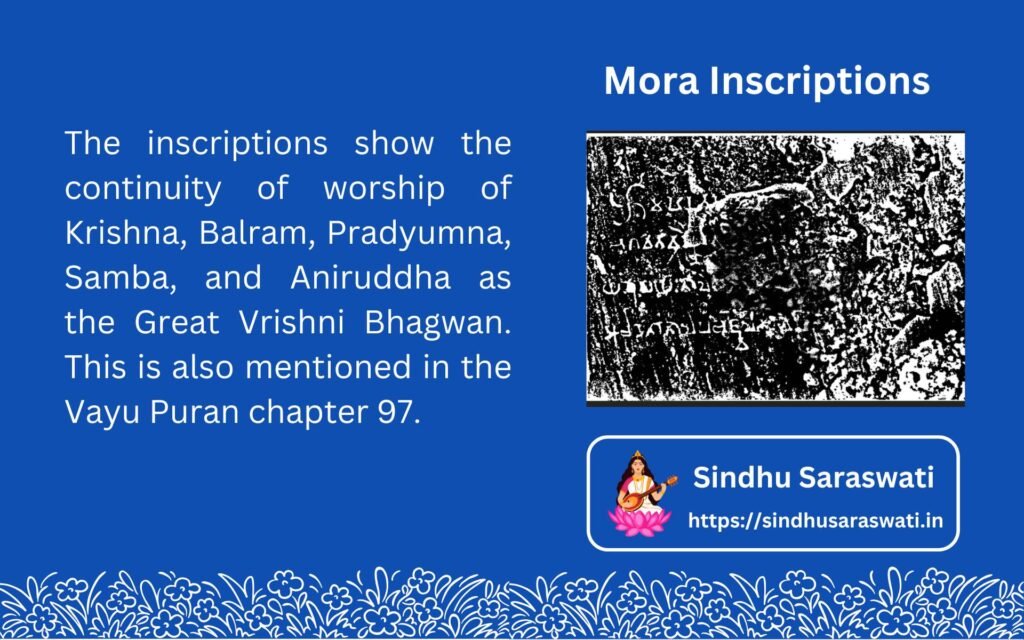The Mora Well Inscriptions are a part of the Great Satrap Inscriptions from the 1st century BCE, located in the Village of Mora in Uttar Pradesh. The inscriptions show the continuity of worship of Krishna, Balaram, and the lineage of Krishna.
The discovery of this well led to the further discovery of the Vrishni Temple, several stone statues of the deities of the temple.
Discovery
The inscription was discovered inside a well, and the stone of the inscription led to further discoveries of the Mora Complex. The village is located in
The Inscriptions
The inscriptions with the picture shown below are written in Standard Sanskrit (Mature Sanskrit) and mention the following things in Brahmi Script. They are dated to the first century BCE, probably during the reign of King Sudasa (a Kshatrap).
महाक्षत्रपस्य राजुवुलस्य पुत्रस्य स्वामि …
भगवतां वृष्णीनां पञ्चवीराणां प्रतिमाः शैलदेवगृहे …
यस्य तोषायाः शैलं श्रीमद्गृहम् अतुलम् उदध समधार …
Meaning
First Line
The first line mentions the “Son of Great Kshatrap Rajuvula” (the name of the son is not mentioned by the presumed Sudasa). We know it is a son because of the use of the word Swami.
Second Line
The second line mentions the God of Vrishnis, the Idols of the Five Veeras, are situated at the stone temple sanctum (garbhagruha is mentioned as Devagruha).
The five Vrishnis mentioned here definitely included Krishna and Balaram as they were the Ishta Devatas of the Kshatrapa Royals. The Greco-Bactrians, who were the ruling class in this region, had commissioned coins for both these deities. Below are the coins struck by Agathocles Dikaios,
The rest three deities are
- Pradyumna (son of Krishna and Rukmini)
- Samba (son of Krishna)
- Aniruddha (son of Pradyumna)
The names of the rest Vrishni Bhagavants were obtained from the Vrishni Temple of Kondamotu (4th Century CE).
These Five Great Vrishnis were also mentioned in Vayupuran chapter 97, verse 1–2, within the Upodghāta-pāda.
Third Line
The third line mentions that this temple, the splendid (श्रीमद्गृहम् ) and unparalleled (अतुलम् ) structure, was built (समधार as in समधारयत्) for a woman (possibly for the Rajamata).
In ancient India, there were numerous instances where a temple was constructed for the sole worship of the queen or the queen mother (Rajmata). This was done so they could worship in peace without anyone noticing.
An example of this was the Kailasa Temple at Ellora, built by Krishna I of the Rashtrakutas upon the request of his wife.
The Pancha Vrishni Temple
The inscribed stone was a part of the temple dedicated to the five Vrishni Bhagavants, who are known to be
- Krishna (Vasudeva)
- Balaram
- Praduymna
- Samba
- Aniruddha

